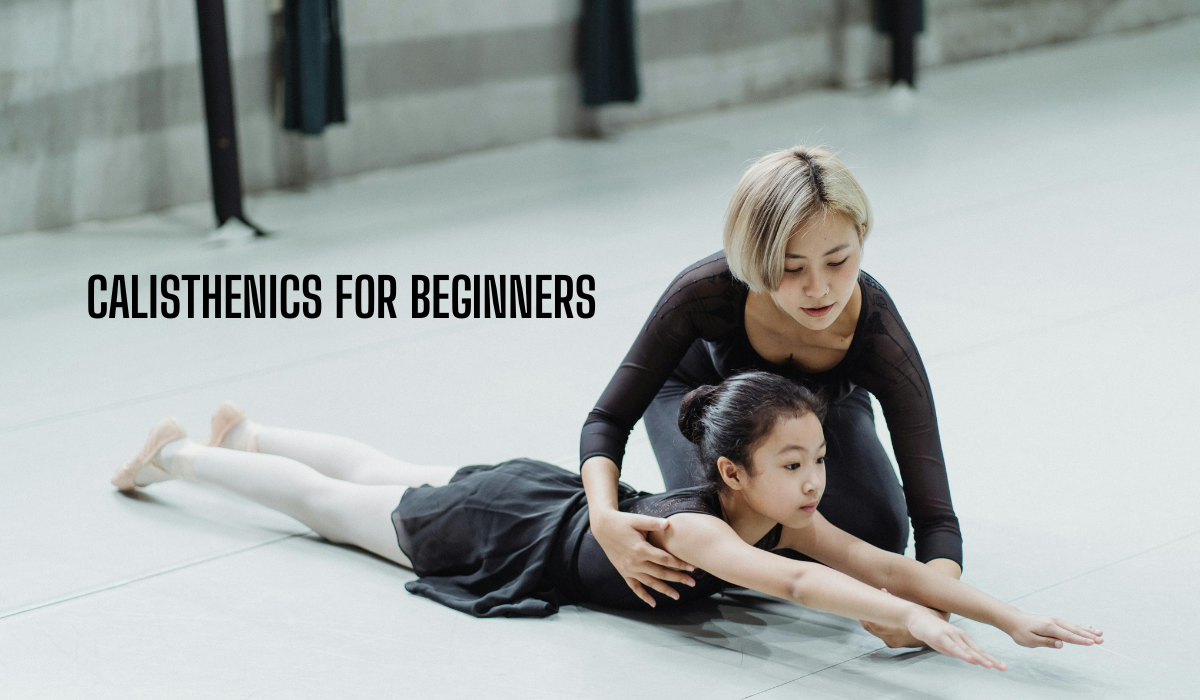In recent years, calisthenics has gained popularity as a powerful and accessible form of fitness training. Unlike weightlifting or high-tech gym workouts, calisthenics relies on your own body weight to build strength, flexibility, and endurance. Whether you’re looking to get fit at home, improve athletic performance, or simply start moving more, calisthenics offers a practical and sustainable path.
This beginner’s guide will walk you through the basics of calisthenics and how to start safely and effectively.
What Is Calisthenics?
Calisthenics is a form of resistance training that uses bodyweight movements to improve muscle tone, strength, coordination, and mobility. Common exercises include:
- Push-ups
- Squats
- Pull-ups
- Planks
- Dips
- Lunges
These exercises can be performed almost anywhere and require minimal or no equipment, making them ideal for beginners who may not have access to a gym.
Benefits of Calisthenics
1. Builds Functional Strength:
Calisthenics mimics natural movements (like pushing, pulling, or squatting), which makes it highly effective for everyday physical tasks.
2. Improves Flexibility and Balance:
Bodyweight exercises encourage full range of motion, helping you develop control over your body.
3. Supports Joint Health:
Unlike heavy lifting, calisthenics puts less strain on joints, especially when done with proper form.
4. Cost-Effective and Convenient:
You don’t need a gym membership or fancy gear just your body, a bit of floor space, and motivation.
5. Scalable for Any Fitness Level:
Exercises can be modified or progressed based on your ability. For example, wall push-ups can evolve into standard push-ups over time.
How to Start Calisthenics as a Beginner
1. Master the Basics
Start with fundamental movements to build a solid foundation:
- Push-ups: Begin with wall or knee push-ups if needed.
- Bodyweight Squats: Focus on form and control.
- Planks: Great for core stability.
- Lunges: Train balance and leg strength.
- Glute Bridges: Strengthen hips and lower back.
2. Create a Simple Routine
Here’s a sample beginner workout (3 times per week):
- 10 Push-ups (or knee/wall version)
- 15 Bodyweight Squats
- 20-30 second Plank
- 10 Lunges (each leg)
- 10 Glute Bridges
Repeat this circuit 2-3 times, resting 1 minute between rounds.
3. Focus on Form Over Reps
Don’t worry about doing a high number of repetitions. Start slow, and focus on proper form and breathing. Quality beats quantity every time.
4. Progress Gradually
As you gain strength, increase the reps, add sets, or move on to harder variations (e.g., incline push-ups to full push-ups).
5. Stay Consistent
You don’t need long workouts 20–30 minutes, 3–4 times a week is enough to see progress if you’re consistent.
Tips for Success
- Warm up before each session to prevent injury.
- Track your progress (reps, sets, how you feel).
- Rest and recover your muscles grow when you rest.
- Eat a balanced diet to support your energy and recovery.
- Listen to your body. Avoid pushing through pain.
Final Thoughts
Calisthenics is a great entry point into the world of fitness. It’s flexible, low-cost, and deeply rewarding. You don’t need experience or equipment just a willingness to move and improve. Whether your goal is to get stronger, feel more energized, or simply move better in daily life, calisthenics can take you there one rep at a time.
FAQs: Calisthenics for Beginners
Q1: Do I need any equipment to start calisthenics?
A: No, most basic calisthenics exercises use your own body weight. However, as you progress, a pull-up bar or resistance bands can be helpful but are not required for beginners.
Q2: Is calisthenics good for building muscle?
A: Yes. Calisthenics can build lean muscle and strength, especially when you focus on proper form, progressive overload, and consistent training. While it may not build bulky muscle like heavy weightlifting, it’s excellent for functional strength and endurance.
Q3: Can I lose weight with calisthenics?
A: Absolutely. Calisthenics workouts burn calories and improve metabolism. Combined with a healthy diet, they can support fat loss and muscle toning.
Q4: How many times a week should a beginner do calisthenics?
A: Starting with 3 times per week is ideal. This gives your body time to recover while building consistency. As you get stronger, you can train 4–5 times a week.
Q5: I can’t do a single push-up or pull-up. Can I still start?
A: Yes! Calisthenics is all about progression. Begin with easier variations like wall push-ups, knee push-ups, or assisted pull-ups. You’ll improve with time and patience.
Q6: How long before I see results?
A: You may start feeling stronger and more energized in 2–4 weeks, especially with regular workouts and good nutrition. Visible changes often appear within 6–8 weeks, depending on your body and effort.
Q7: Can I do calisthenics if I’m overweight or out of shape?
A: Definitely. Calisthenics is scalable for all body types and fitness levels. Start slow, use modified exercises, and increase intensity gradually as you build strength and confidence.
Q8: Should I stretch before or after my workout?
A: Do dynamic stretches or light cardio before your workout to warm up. Save static stretches (holding a stretch) for after the workout to help with flexibility and recovery.
Q9: Is calisthenics safe for older adults?
A: Yes, with proper guidance. Bodyweight exercises can improve mobility, balance, and joint health. It’s always a good idea to consult a doctor or trainer if you have health concerns.
Q10: What’s the difference between calisthenics and regular strength training?
A: Traditional strength training often uses weights or machines, while calisthenics uses your own body weight for resistance. Calisthenics also focuses more on natural movement, core strength, and balance.

